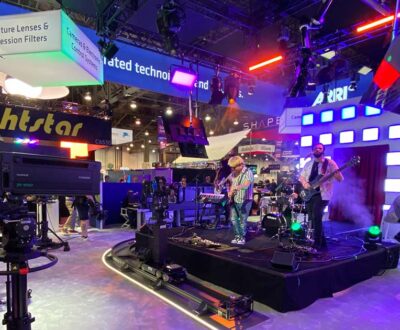What Marketing Automation Is:
It used to be you could only make contact with customers at specific, elusive times: through ads you hoped they might come across, emails that were indistinguishable from spam, and during the actual purchase. But the traditional customer journey has been disrupted. Your customer is always online and reconsidering their purchase at every step. So your marketing strategy needs to work anytime, anywhere.
Marketing automation refers to tools that let you automate marketing actions across channels. These tools also automate the analytics that drives your marketing decisions. Forrester predicts that the adoption of marketing automation will double by 2023. But the biggest reason businesses report for not pulling the trigger yet is that they feel a lack of confidence or know-how.
Lets look at how marketing automation can help you with
- Posts and communications
- Segmenting
- Lead scoring
- Artificial intelligence
- Cross-sales.
1. Automate Your Repetitive Tasks
The most obvious use of automation is the repetitive tasks that come with growing a business. Think about how your currently handle your posts and communications – right now you have to hit send or publish on each one individually. Free up time by automating:
- Posts: schedule your posting calendar and banish that nagging feeling you’re forgetting something.
- Polls: drive engagement with polls on Instagram and Twitter.
- Giveaways: gather leads and foster brand loyalty with an automated sweepstakes.
- Emails: schedule direct marketing to reach your prospects anytime. Additionally, shorten the response time for your small business by automating replies to customer inquiries.
- Texts: don’t stop at email campaigns. Push text messages to your customers so you’ll be top of mind.
You can also automate the behind the scenes stuff.
- A/B testing: A lot of resources go into gathering and analyzing the metrics that power your business. Automate A/B tests by changing what landing page or marketing material visitors see. And no longer do you have to pore over data that can be abstracted by AI.
- User data: Marketing automation can be deployed to scan your data for insights. You don’t individually analyze anything else about your business, so why should demographics (or firmographics) be any different?
What to use
Hootsuite schedules social media posts and can send the same status to all your accounts. Manage your social media calendar. It’s often compared to Buffer, but the latter seems to still be in its nascent stage.
MailChimp has expanded past email to offer social and landing page management. Among their automation offerings they emails triggered by actions such as: new subscriptions, big days like birthdays and anniversaries, shopping cart abandonment, and making a first purchase.
2. Up Your Segmenting Game
People can tell when marketing communications are posing as personal but were sent the same to everyone on your list. So how do you foster trust in your company without great cost to you in terms of time and efficiency? Send them something that truly speaks to their needs and desires. Use marketing automation segmentation to target or fine-tune your ads for each customer.
Marketing automation is a bit like a choose-your-own-adventure game in that it personalizes the experience through if-then statements. In this case, you choose who sees which ad based on their product interests, past purchases, and level of buying intent. Additionally, you can create unique in-app messages for each customer. Make sure you and your customers find each other – and that it converts to real sales – by targeting the most promising segments. When it comes to email campaigns, think narrow and high-quality over general and broad.
What to use
Instapage offers what they call “1:1 ad-to-page personalized experiences.” This is a fancy way of saying when your customer discovers you from an ad, the site they see will match it. So the site and the ad will match in terms of messaging, focus, and even colors. When you automate your landing page, your customers will see a different page when they land on your website. One metric is your customer’s intent – whether they’re in the mindset to buy.
3. Get Ahead With Predictive Lead Scoring
You’ve just had an awesome trade show and come home with more leads than you know what do with. But like anything with your business you need to be specific about how you pursue them because time is money. Predictive lead scoring uses AI to judge which leads will be the highest yield. This increases your likelihood of actually converting to a sale. According to The Annuitas Group, marketing automation increases qualified leads by 451%.
Traditional lead scoring has generally meant scouring onboarding data, playing with point systems and even manually judging the quality of leads. You’re often looking at CRM data and different attributes like traffic, revenue, and volume. And it’s often felt like a total shot in the dark.
Predictive lead scoring takes it to the next level by looking at Moreover, with predictive lead scoring you can deploy real-time trigger campaigns and personalized communication. The critical difference is in the words “real-time”: reaching customers at critical decision points to drive them to purchase.
What to use
Marketo is an Adobe company. They offer a suite of services, including predictive lead scoring. First, you’ll profile your ideal customer, score them using AI, then show them the correct marketing tailored to their profile.
Pardot is a B2B marketing automation product by Salesforce. They offer AI insights for account-based marketing to lock into the most optimistic prospects in your Rolodex.
4. Use AI and Machine Learning for Better Campaigns
For a future-proof business, AI and machine learning need to be part of marketing strategy. But we’ve been talking about automation this whole time, you might wonder. Artificial intelligence, however, is more than automation. And AI and machine learning can influence automated campaigns, not just in execution but in content.
Writing for Marketo, startup advisor, Carey Casey predicts that one-size-fits-all content soon won’t cut it. Rather than social posts meant for everyone or exhaustive subject matter guides, it will be about highly targeted “microcontent.” One strategy he advises for personalizing the content you send each lead is to develop discrete marketing materials that work in different combinations.
What to use
Hubspot provides products for inbound marketing. When you use a marketing automation tool, you set up a script for how the action will get triggered, called a workflow. Their marketing automation tool makes it easy to visualize your workflows. It’s far and away considered the best in marketing automation. It uses AI to develop hyper-personalized content at scale.
5. Putting It All Together To Trigger Cross-Sales
Whatever your product, you’re trying to drive action – whether that’s signing up for your webinar, downloading your eBook, or purchasing a performance parka. We’ve talked about initiating a post or message, but this is about deciding who sees it. With AI you can automate cross-sales. Your goal is ultimately to turn prospects into loyal customers. One way you do this is by cross-selling to get repeat sales from your existing customer base. It’s time to use segmentation, machine learning, and artificial intelligence to trigger campaigns and marketing actions.
We mentioned that you can automate emails with these tools. But don’t leave it up to judgment: you might send it at an off time and miss your window of opportunity. With marketing automation, you can trigger communications based on the actions of your customers. Triggers could include site visits, form completions or social shares. It could even be when someone checks in for an IRL event like a trade show. And with AI you can personalize the content of the emails even more.
What to use
Constant Contact is an email marketing software. They offer automatic welcome emails to underscore your onboarding process and subject line testing. Notably, they also can trigger an email series based on where your customers click.
Unbounce is a landing page builder and lead conversion platform. They offer something called Dynamic Text Replacement – DTR – which “swaps out select keywords to match what your prospects are searching.” Now, this is very cool but not as cool as it sounds: it’s another way to say they do 1:1 ad-to-page personalization, like the aforementioned Instapage. It’s still a great way, however, to automatically increase the relevancy of your page.
The Bottom Line on Marketing Automation
What marketing automation is not: “set it and forget it.”
It’s not a bulk email list. It’s a way to work smarter, not harder. It’s a way to put your data to work for you so you can amplify your workflow and focus on higher priorities. Your company is growing, and you want to be just as effective at your biggest as when you were just starting out. The point is to nurture your leads and put the best technology to work so you can stop chasing tasks that don’t add to your bottom line.
If you need help setting up a marketing automation system, or integrating an existing system with your other business platforms, feel free to reach out to us for a no obligation consultation!
About us and this blog
We are a full-service marketing company with a focus on helping our customers increase leads, sales, and conversions.
Request a free quote
Richardson Marketing is dedicated to helping our clients attract customers and increase sales.
Have a Question?
More from our blog
See all postsRecent Posts
- Signal Strength: How Brands Stay Consistent as They Expand Across Social Media December 19, 2025
- 2025 Banking Marketing Performance Study December 7, 2025
- The Top Outdoor Industry Trade Shows and Conventions in 2025–2026 September 7, 2025









